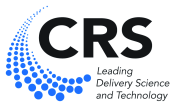Abstract
This chapter presents an overview on the different types of drug delivery systems that are predominantly governed by diffusion. The systems are classified according to their physical structure (reservoir devices versus monolithic systems), as well as according to the ratio of “initial drug loading and drug solubility.” For various cases, mathematical models are briefly presented considering different device geometries. These theories are mechanistically realistic and enable quantitative description of the resulting release kinetics. Effects of formulation parameters on drug release can also be predicted quantitatively. Practical examples are given to illustrate the applicability of the presented theories and the benefits of understanding how a diffusion-controlled drug delivery system works.
Access this chapter
Tax calculation will be finalised at checkout
Purchases are for personal use only
References
Fick A (1855) Ueber diffusion. Poggendor Ann Phys 94:59–86
Fick A (1995) On liquid diffusion. J Membr Sci 100:33–38
Crank J (1975) The mathematics of diffusion. Clarendon Press, Oxford
Carslaw HS, Jaeger JC (1959) Conduction of heat in solids. Clarendon Press, Oxford
Vergnaud JM (1993) Controlled drug release of oral dosage forms. Ellis Horwood, Chichester
Cussler EL (1984) Diffusion: mass transfer in fluid systems. Cambridge University Press, New York
Fan LT, Singh SK (1989) Controlled release: a quantitative treatment. Springer-Verlag, Berlin
Siepmann J, Siepmann F (2008) Mathematical modeling of drug delivery. Int J Pharm 364:328–343
Badawy SI, Hussain MA (2007) Microenvironmental pH modulation in solid dosage forms. J Pharm Sci 96:948–959
Thoma K, Ziegler I (1998) The pH-independent release of fenoldopam from pellets with insoluble film coats. Eur J Pharm Biopharm 46:105–113
Kreye F, Siepmann F, Siepmann J (2011) Drug release mechanisms of compressed lipid implants. Int J Pharm 404:27–35
Muschert S, Siepmann F, Leclercq B, Carlin B, Siepmann J (2009) Prediction of drug release from ethylcellulose coated pellets. J Control Rel 135:71–79
Lecomte F, Siepmann J, Walther M, MacRae RJ, Bodmeier R (2005) pH-sensitive polymer blends used as coating materials to control drug release from spherical beads: elucidation of the underlying mass transport mechanisms. Pharm Res 22:1129–1141
Marucci M, Ragnarsson R, Axelsson A (2007) Evaluation of osmotic effects on coated pellets using a mechanistic model. Int J Pharm 336:67–74
Muschert S, Siepmann F, Leclercq B, Carlin B, Siepmann J (2009) Drug release mechanisms from ethylcellulose: PVA-PEG graft copolymer-coated pellets. Eur J Pharm Biopharm 72:130–137
Borgquist P, Nevsten P, Nilsson B, Wallenberg LR, Axelsson A (2004) Simulation of the release from a multiparticulate system validated by single pellet and dose release experiments. J Control Rel 97:453–465
Tanquary AC, Lacey RE (1974) Controlled release of biologically active agents. Plendon Press, New York
Paul DR, McSpadden SK (1976) Diffusional release of solute from a polymer matrix. J Membr Sci 1:33–48
Kim C-J (2000) Controlled release dosage form design. Technomic, Lancaster, PA
Higuchi T (1961) Rate of release of medicaments from ointment bases containing drugs in suspensions. J Pharm Sci 50:874–875
Bunge AL (1998) Release rates from topical formulations containing drugs in suspension. J Control Rel 52:141–148
Frenning G (2003) Theoretical investigation of drug release from planar matrix systems: effects of a finite dissolution rate. J Control Rel 92:331–339
Ferrero C, Massuelle D, Jeannerat D, Doelker E (2008) Towards elucidation of the drug release mechanism from compressed hydrophilic matrices made of cellulose ethers. I. Pulse-field-gradient spin-echo NMR study of sodium salicylate diffusivity in swollen hydrogels with respect to polymer matrix physical structure. J Control Rel 128:71–79
Snaar JE, Bowtell R, Melia CD, Morgan S, Narasimhan B, Peppas NA (1998) Self-diffusion and molecular mobility in PVA-based dissolution-controlled systems for drug delivery. Magn Reson Imaging 16:691–694
Vermonden T, Jena SS, Barriet D, Censi R, van der Gucht J, Hennink WE, Siegel RA (2010) Macromolecular diffusion in self-assembling biodegradable thermosensitive hydrogels. Macromolecules 43:782–789
Brandl F, Kastner F, Gschwind RM, Blunk T, Teßmar J, Göpferich A (2010) Hydrogel-based drug delivery systems: comparison of drug diffusivity and release kinetics. J Control Rel 142:221–228
Stringer JL, Peppas NA (1996) Diffusion of small molecular weight drugs in radiation-crosslinked poly(ethylene oxide) hydrogels. J Control Rel 42:195–202
Siepmann J, Lecomte F, Bodmeier R (1999) Diffusion-controlled drug delivery systems: calculation of the required composition to achieve desired release profiles. J Control Rel 60:379–389
Wu C, McGinity JW (1999) Non-traditional plasticization of polymeric films. Int J Pharm 177:15–27
Siepmann F, Le Brun V, Siepmann J (2006) Drugs acting as plasticizers in polymeric systems: a quantitative treatment. J Control Rel 115:298–306
Author information
Authors and Affiliations
Corresponding author
Editor information
Editors and Affiliations
Rights and permissions
Copyright information
© 2012 Springer US
About this chapter
Cite this chapter
Siepmann, J., Siegel, R.A., Siepmann, F. (2012). Diffusion Controlled Drug Delivery Systems. In: Siepmann, J., Siegel, R., Rathbone, M. (eds) Fundamentals and Applications of Controlled Release Drug Delivery. Advances in Delivery Science and Technology. Springer, Boston, MA. https://doi.org/10.1007/978-1-4614-0881-9_6
Download citation
DOI: https://doi.org/10.1007/978-1-4614-0881-9_6
Published:
Publisher Name: Springer, Boston, MA
Print ISBN: 978-1-4614-0880-2
Online ISBN: 978-1-4614-0881-9
eBook Packages: Biomedical and Life SciencesBiomedical and Life Sciences (R0)


